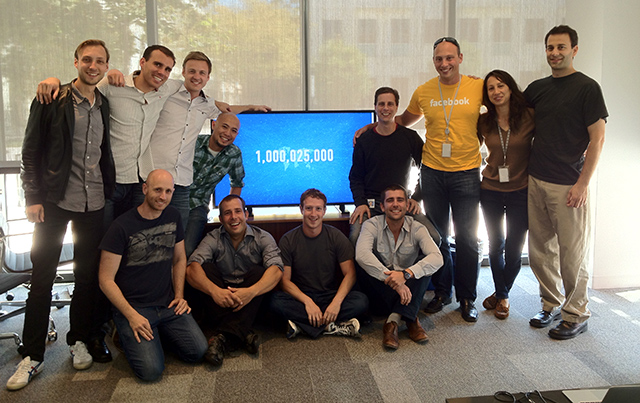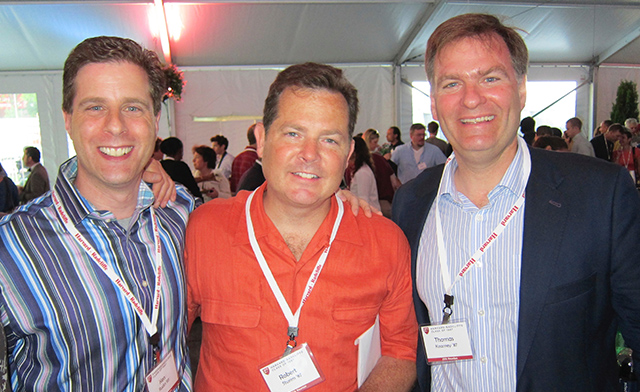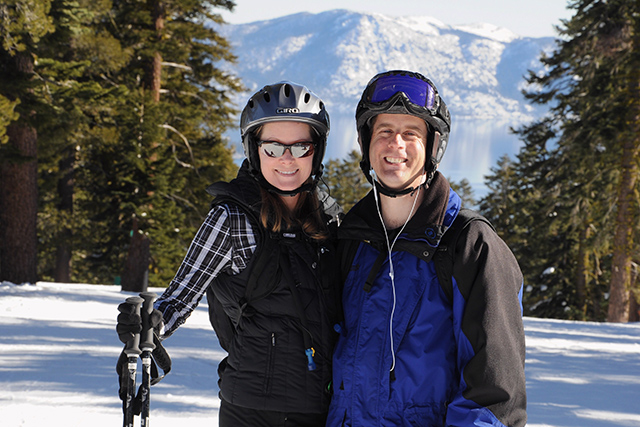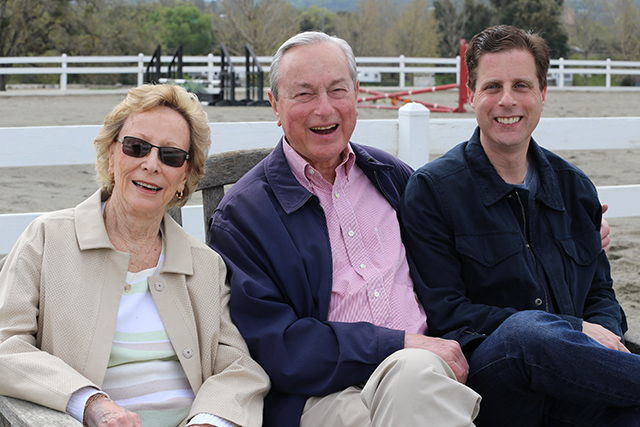Using data to unlock the full potential of Google products
Over 3 billion people—more than a third of the Earth’s population—all have one thing in common: they are active monthly users of a Google product.
Because the company already has so many users, it may seem like Ken Rudin, head of user growth and analytics at Google, has an easy job. But with fierce competition and ever-advancing new technology, that is far from the case.
“What I focus on is figuring out how we can optimize what we are currently doing,” said Rudin, A.B. ’87, a computer science concentrator at the Harvard John A. Paulson School of Engineering and Applied Sciences. “My team runs experiments with the goal of either acquiring users more efficiently or turning all the implicit value in a product into realized value for our users. We want to unlock what a product can do for the user.”
Rudin’s work involves rigorous science—studying massive troves of data to understand how a product is being used, creating a hypothesis to improve a feature, and then running controlled experiments.
For instance, if his team finds that 70 percent of users who reach a certain screen in an app drop out, they’ll dig into that data. Perhaps the screen asks for credit card information, but most users aren’t committed to making a purchase yet? In that case, his team might advocate to move that step later in the process to help retain more users.

Rudin (back row, fourth from right) and the Facebook Growth Team (and Mark Zuckerberg) on the day Facebook reached more than one billion monthly active users. (Photo courtesy of Ken Rudin)
“New tools and technologies are making it easier to come up with insights from data. But just because you get the insights you’re looking for doesn’t mean you’ll be able to convince someone in your company to implement a change to a product based on those insights,” he said. “Soft skills are becoming more and more critical to success as a data scientist. You can’t just master all the algorithms—you have to understand what the business is focusing on and how you can use data to help the company achieve its goals.”
That focus on using data to drive impact marks the most recent shift in the role of the data scientist, Rudin said. It is one of several transformations that have required him to continue developing new skills throughout his career.
For Rudin, youthful interest in gadgetry blossomed into a full-blown passion for computer science once he began tinkering with his first desktop computer in the early 1980s.
“The desktop computer was the ultimate gadget, and I really wanted to learn how it worked,” he said. “The creative aspect of computer science really appealed to me. I liked the notion that I could think up something, and then figure out a program to do what I had imagined.”
After graduating from Harvard, Rudin began working as a programmer at Oracle. Though he worked for a database company, he didn’t really understand how corporate clients were using data. But as he worked more closely with Oracle’s customers, he became fascinated by data’s ability to help companies be more efficient. Eventually he sought to delve deeper into business, drawing on past experiences at his family’s paper wholesale firm, and earned an MBA at Stanford Business School.
“Tech and data are in my DNA,” he said. “Every role I’ve had has had some form of analytics focus. I didn’t really know anything about analytics when I first started working, so I had to figure out how to do this pretty quickly.”

Rudin (left) with his two Harvard College roommates at their 25th reunion. (Photo courtesy of Ken Rudin)
Rudin worked in analytics leadership roles for a variety of tech companies, including at Salesforce.com, Siebel Analytics, Zynga, and Facebook. As his career advanced, the amount of available data grew exponentially, as did the ability to use that data for concrete outcomes.
In some ways, Google can be considered to be predominantly a data company, Rudin said. The firm’s business model is about connecting other companies with customers, and it relies on large amounts of data to do that well.
“Increasingly, companies like Google are using data to help optimize nearly every part of the business,” he said. “For example, we also use data to help us make our data centers more energy efficient, and to help us define a product’s roadmap.”
But the rapid increase in the amount of data being collected, and its pervasiveness in nearly every aspect of life, has brought pitfalls that threaten more than just the industry, Rudin said.
Google, Facebook, and other tech companies have come under fire from all sides, including government officials in the European Union and United States, for practices that compromise data privacy.
“Privacy laws are great, but they can only go so far. There are always going to be loopholes,” he said. “What has to fill in the gaps is the culture of the company that is using this data. You don’t want people deciding that, just because something is not illegal, then it’s OK.”

Rudin skiing with his wife, Nancy, at Lake Tahoe. (Photo courtesy of Ken Rudin)
Also, enormous data sets are being used to fuel innovations in the use of machine learning systems, but any type of racial, gender, or other bias in the data sets these systems rely on can lead to biases in how they operate. It is vital to have a diverse panel of people study data, ensuring different perspectives are equally represented, and to develop objective measures of fairness, he said.
As technology continues to improve, Rudin finds the potential use of machine learning for fraudulent purposes to be extremely troubling. Using machine learning to imitate reality may have many benign and even beneficial uses, he said, but a nefarious individual could use those tools to spread a false message. For instance, machine-learning technology could be used to create a fake video of a politician speaking that would be nearly indistinguishable from actual footage.
“There are some technical ways to thwart that, like using blockchain or public key encryption, but it is going to be a cat and mouse game for some time as people come up with better ways to thwart detection,” he said.
Those pitfalls are constantly on Rudin’s mind, but they also emphasize the responsibility held by his team and others like it. Keeping users at the heart of how data is gathered and utilized is the ideal path forward.
“The focus needs to be on education and control,” he said. “Make sure the user can easily understand how you are using their data and the benefits to them. Once they are educated, let the user determine if they are comfortable with that tradeoff. Don’t make decisions for them. I think that’s just a golden rule—if we could get every company to act based on that rule, that would have a much bigger impact than any piece of legislation.”

Rudin with his parents, Stephen Rudin, A.B. '53, and Gail Rudin. (Photo courtesy of Ken Rudin)